- Home
- H. P. Lovecraft
At the mountains of madness Page 2
At the mountains of madness Read online
Page 2
3. “GREAT GOD! THIS IS AN AWEFUL PLACE.”
Robert Falcon Scott (Scott of the Antarctic) recorded the sentiment above in his diary as a way of describing Antarctica. It may be that the misspelling is apocryphal, but it is nonetheless apt.
The Antarctic has long been an invaluable setting for not just the awful but the awe-full, and thus the awesome. Apart from its literary usefulness as a far-off, inhospitable place that isolates any and all visitors, it offers the stark symbolism of being a great blank space, a continent-wide white screen on which the human mind can project its fears.
From a young age, Lovecraft was fascinated by the Antarctic. As a child he avidly followed journeys of polar explorers, and he was an aficionado of Antarctic fiction. The most obvious of the influences on At the Mountains of Madness is the story he explicitly refers to throughout: Poe’s The Narrative of Arthur Gordon Pym of Nantucket (1850), a peculiar, rambling, brilliant work of maritime adventure and mythicized southern pole. Lovecraft takes from Poe his bizarre giant birds and the cry “Tekeli-li!,” which is incomparably more terrifying the second novel around.
However, we know that when he was very young, Lovecraft also read and enjoyed a vastly inferior polar work, W. Frank Russell’s The Frozen Pirate. This forgettable piece is interesting for one important reason: its narrative revolves around cryonics, freezing a pirate for fifty years. (He wakes, of course.) Add to the continent’s blankness this preserving power of the cold, thus allowing our supposed atavistic and repressed anxieties to be put on ice, and the Antarctic becomes almost vulgarly overdetermined as a site for psychically anxious fictions.
Eight years after Lovecraft’s work, something else was pulled up out of the ice in John Campbell’s 1938 story “Who Goes There?,” which spawned two films, 1951’s The Thing from Another World and 1982’s The Thing. But first and best, it is Lovecraft, in the pages that follow, who took Russell’s theme of icy preservation and produced an astounding reconfiguring of earthly history, as well as some respectable alien-caused carnage.
It is banal to point out that landscape in literature very often functions symbolically, raising questions of psyche and culture. The list of obvious examples is long—the moors of Wuthering Heights, the crashing seas of Moby-Dick, the jungle in Heart of Darkness. Here the snows perform that role, and to make the act of uncovering the social unconscious absolutely clear, Lovecraft literally digs down into his psychic landscape.
The symbolism of this plot device—recovery of the preserved from below the surface—would be clear even without the technophile descriptions that Lovecraft adds; with them, it becomes almost camp. As Victoria Nelson puts it, “[t]he narrator is a geologist who has brought to the Antarctic a remarkable new drill that can go to unplumbed depths. . . . [H]e is an explorer of unconscious strata of the psyche, or put in a way Lovecraft might not have approved of, a psychoanalyst.” 6 That stands, so long as it is understood that it is not merely one person but society which is here undergoing analysis.
4. DECADENCE, OLD ONES, AND THE DECLINE OF THE WEST
Lovecraft was notoriously not only an elitist and a reactionary, but a bilious lifelong racist. His idiot and disgraceful pronouncements on racial themes range from pompous pseudoscience—“The Negro is fundamentally the biologically inferior of all White and even Mongolian races”—to monstrous endorsements—“[Hitler’s] vision is . . . romantic and immature . . . yet that cannot blind us to the honest rightness of the man’s basic urge . . . I know he’s a clown, but by God, I like the boy!” 7 This was written before the Holocaust, but Hitler’s attitudes were no secret, and the terrible threat he represented was stressed by many. (Lovecraft’s letter was written some months after Hitler had become chancellor.) So while Lovecraft is not here overtly supporting genocide, he is hardly off the hook.
Two things are sometimes adduced to excuse him. One is that it was “the time”—people were just “like that” back then. This is an unacceptable condescension to history: people were emphatically not all like that. The other offering is the fact that Lovecraft, despite the pride with which he claims “I became rather well known as an anti-Semite,” 8 was married to Sonia H. Greene, a Jew.
This latter is sometimes claimed as a kind of mitigation by paradox, as if an inconsistent prejudice is less bad, rather than, say, more confused and just as bad. The fact of Lovecraft’s Jewish wife and friends excuses his foul racist drivel not one iota.
What it does accomplish is to help make clear what kind of racist he was: at least with regard to Jews, Lovecraft was open, as he explained to Sonia, to the possibility of their being “well assimilated.” 9 (He was in fact wildly inconsistent on this possibility, but let us take him at his word to his wife.) This is a cultural, rather than biological, racism.
The same was not true, of course, as regards other ethnic groups, particularly blacks. Lovecraft’s hysterical terror of miscegenation recurs throughout his work. Obviously, this weighs heavily on the modern reader. It is unconvincing to suggest that his racism is extrinsic to his major work. Not just the overtly racist work like “The Horror at Red Hook,” but central and justly celebrated pieces like “The Shadow Over Innsmouth” or “The Dunwich Horror” locate the horror, the awe, the very stuff that makes Lovecraft great, inseparably from his paranoid terror of mixing the races.
Happily, there is no contradiction between despising a writer’s politics and admiring the very art they helped create. Discussing Journey to the End of the Night by Céline, a writer whose racism, nihilism, and uncompromising use of language make him an interesting comparison with Lovecraft, Leon Trotsky described how the politics which make him an enemy also make him a great writer with an unflinching eye, a “receptivity of the objective world.” 10 Lovecraft has not so much the steady gaze of objective nihilism as the transmogrifying vision of hysterical nihilism, from which his racism is inextricable.
The very race-inflected nihilism we vigorously repudiate is simultaneously a central engine for what we admire in Lovecraft’s art. Without ever excusing the racism itself, the French novelist Michel Houellebecq has brilliantly and provocatively argued that Lovecraft’s “hallucinatory vision is directly at the source of the descriptions of the nightmarish entities which people the Cthulhu cycle. It is racial hatred that provokes in Lovecraft that state of poetic trance.” 11
The specifically racist elements of Lovecraft’s anxieties are less obvious in Mountains than elsewhere. This is largely a reflection of two factors. One is the change in the focus of Lovecraft’s politics at the very end of the 1920s, just before Mountains was written.
After years during which, as Lovecraft himself put it, he “used to be a hide-bound Tory simply for traditional and antiquarian reasons,” 12 at this time, in the aftermath of the financial collapse of 1929, Lovecraft came to believe that “laissez-faire capitalism has actually come to the end of its rope,” 13 and he became a socialist, advocating some social programs and government control of the economy. His was, however, a tremendously patrician “socialism,” which dislodged neither his racism nor his social elitism.
The other, linked factor underlying Mountains’ less histrionically racialized politics is its sharp focus on one overwhelmingly important inspiration: the philosophy of Oswald Spengler.
In 1918, Spengler, a German philosopher, published the first volume of his magnum opus, The Decline of the West. Spengler’s basic thesis was of a cyclical civilizational history. “High cultures” pass through stages like organisms: birth, development, a maturity of cultural flowering, then the slow decline through urban civilization to senescence, decadence, and death.
Like weird fiction itself, Spengler’s portentous vision was a scar caused by the wound of early twentieth-century cataclysms. His worldview was enormously influential. Hitler was an admirer, as were the right-wing theorist Julius Evola and the wack-job high priest of American “intellectual” fascism, Francis Parker Yockey. But Spengler’s model had a wider cultural impact. Relatively mainstream figur
es such as the historian Arnold Toynbee and the writers Jack Kerouac and Henry Miller drew upon his ideas.
So, crucially, did H. P. Lovecraft, who read the first volume in translation in 1927. When discussing At the Mountains of Madness, the importance of Spengler’s The Decline of the West cannot be stressed too highly. (Indeed, S. T. Joshi places Spengler at the center of his discussion of Lovecraft’s political and philosophical ideas—his book on the topic is entitled H. P. Lovecraft: The Decline of the West.) The very setting, that enormous, impossible city, is utterly Spenglerian, recalling the “civilization” phase in his cycle, when culture passes beyond its high point and its upheavals occur in burgeoning megalopolises.
“It is the Late city that first defies the land, contradicts Nature in the lines of its silhouette, denies all Nature,” Spengler says. “It wants to be something different from and higher than Nature. These high-pitched gables, these Baroque cupolas, spires, and pinnacles, neither are, nor desire to be, related with anything in Nature. And then begins the gigantic megalopolis, the city-as-world, which suffers nothing beside itself. . . .” In turn, Lovecraft describes the unbelievable sprawl and scale of the Old Ones’ city, “stretched nearly to the vision’s limit,” a “Cyclopean maze of squared, curved, and angled blocks . . . which cut off all comfortable refuge,” the “unhuman massiveness of these vast stone towers and ramparts,” as embodying “some fiendish violation of known natural law.”
For Spengler, the city-as-world exists in a vampiric relationship with the country around it. Where once the city was thrown up by the country, “now the giant city sucks the country dry,” relentlessly seducing the population until the city is full and the country is devoid of human life. In Lovecraft’s story, the dynamic of the city’s parasitic rise and fall is rendered aesthetically, with a vivid image of a dark city surrounded by country that has been sucked so dry it is bone-white, bled of all color.
As the narrator navigates the vast stone corridors, he literally walks through the architecturalization of Spengler’s cyclical history. In the bas-reliefs that he and Danforth are able (however improbably) to decipher, we read a fantasticated representation of The Decline of the West.
The oldest domestic structure the narrator finds “contained bas-reliefs of an artistry surpassing anything else.” By contrast, the later art “would be called decadent in comparison.” This is an obsessive concern. It was this jeremiad about “decadence” that Lovecraft took, above all, from Spengler.
“It is my belief,” he wrote to Clark Ashton Smith in 1927, “[and] was so long before Spengler put his seal of scholarly proof on it—that our mechanical and industrial age is one of frank decadence.”
In this short novel, the words “decadent” and “decadence” and their derived forms are repeated twenty-one times. Toward the end of the story, there are near-casual references to surfaces “sparsely decorated with cartouches of conventional designs in a late, decadent style.” The narrative of the Old Ones’ cultural decline from a high point of classical perfection to an explicitly Byzantine self-conscious decadence, then on to a decadence which did not even have the mitigation of self-knowledge, has by now become accepted wisdom.
5. SYMPATHY FOR THE DEVIL
The resonance with the rise and decline of human culture is made explicit not only in historic comparison, but in the narrator’s actual sympathy with the Old Ones and his claiming our kinship with them. “[T]hey were not evil. . . . They were the men of another age and another order of being. . . . Radiates, vegetables, monstrosities, star-spawn—whatever they had been, they were men!”
This is a brilliant and surprising maneuver, which allows the Old Ones to occupy two precisely opposed positions in the story. At first they are the monsters, the murderers of humans, the source of our fear; by the end of the book, they have become projections of ourselves, and when we find them brutally murdered in turn, they are now the victims of monsters, and our identification with them is seamless and complete.
Underlining the tragic nature of the narrative is the fact, stressed by Lovecraft, that these were Old Ones from an early stage of their culture. When we read of their execution of sketches “in a strange and assured technique perhaps superior . . . to any of the decadent carvings . . . the characteristic and unmistakable technique of the Old Ones . . . in the dead city’s heyday,” there is a sadness, for these poor nobles displaced into a city marking their compatriots’ decline—a city of decultured “fellaheen,” in Spengler’s terminology. Ultimately they suffer an even worse fate.
It is with this that Lovecraft departs from, or perhaps adds to, “classic” Spenglerianism.
As the story gradually asks us to identify with the Old Ones, Lovecraft describes their government as “evidently complex and probably socialistic.” This could come only from the Lovecraft of the 1930s, who had come to see “socialism” as “probably necessary.” 14 This flurry of apparent “leftism,” however, does not put him out of kilter with Spengler. Lovecraft has merely replaced his faith in an “aristocracy” with one in some kind of culturally trained technocracy—a different elite, but an elite sharply differentiated from the masses just the same. He does not advocate democracy, grassroots or otherwise, but an “oligarchy of intelligence and education.” 15
At the heart of Lovecraft’s elitism—including his “socialism”—was a visceral mistrust of and antipathy for the masses. Lovecraft believed that reforms were necessary in order to forestall an alternative that appalled him.
“Something must be done,” he says. “The old system . . . leads absolutely nowhere except to a suffering bound to breed violent and disastrous revolution,” 16 and “the need of legal change, if we are to avert a revolution, is pretty manifest today.” 17 In short, Lovecraft was a “socialist” precisely because of his loathing of revolution. This pathological hatred is the horizon of the novel.
“I’m no Bolshevik!” Lovecraft insisted, 18 a fact made clear in his vicious 1919 essay “Bolshevism.” Even after he had moved to the left and become a critic of capitalism, he excoriated the “total cultural disruption” 19 of the Russian Revolution. His fear is of revolution’s supposed degradation of “culture.” Race is still firmly evident in this concern, and here it can be seen how it segues into class, the other key axis on which this hatred of revolution is articulated. The uprising of the masses is something Lovecraft views with evident terror. This is because he both views such masses as racially inferior (“sub-human Russian rabble” in the case of the Bolsheviks), and loathes them precisely because they are masses. There is little more contemptible and terrifying to this elitist. It is with this in mind that we can make sense of the sudden switch in our allegiance vis-à-vis the Old Ones, and the uncovering of a fate worse than (cultural) death.
Lovecraft locates the most telling clue to his ultimate nightmare in a sudden, “supremely radical” change in the carvings. “We realised, of course, the great decadence of the Old Ones’ sculpture at the time of the tunneling. . . . But now, in this deeper section . . . there was a sudden difference . . . in basic nature as well as in mere quality . . . involving [a] profound and calamitous degradation of skill.”
A few pages later, one of the perpetrators of that “degenerate work” appears. It is, of course, not an Old One, but a Shoggoth.
We have learned the story of the Shoggoths over the course of the novel. They are, simply, slaves, created by the Old Ones and bred to be beasts of burden. There was a time when they were “uppity,” and a war of subjugation was fought. They were defeated. But that was then. The story of that abortive revolt can serve no purpose other than to explain the final confrontation of the book, its ultimate horror. In the abyss into which our protagonists literally descend, they face the murderer of the Old Ones, and it is a slave that has turned. The Shoggoths are, literally, revolting.
What can this mean but that the Shoggoths have triumphed? The first revolution was a dress rehearsal, like the 1905 Russian revolution. At some point between then and now
they tried again, and succeeded. The Shoggoth’s “shapeless congeries of protoplasmic bubbles” is the logical extension (literally ad nauseam) of Lovecraft’s dehumanizing, subhumanizing vision of the masses. Is it a coincidence that the Shoggoth stares at the narrator with “myriads of temporary eyes”? That it is compared to a subway train, a working-class, ethnically heterogeneous conveyance? The Shoggoth is a mass presence, various, multicolored, refusing to behave.
The Shoggothian qualities of the ethnically mixed working class are made absolutely overt in Lovecraft’s description of a visit he paid to New York’s Lower East Side. “The organic things inhabiting that awful cesspool could not . . . be call’d human. They were monstrous and nebulous adumbrations of the pithecanthropoid and amoebal . . . slithering and oozing . . . in a fashion suggestive of nothing but infesting worms or deep-sea unnamabilities . . . I thought of some avenue of Cyclopean and unwholesome vats, crammed to the vomiting point with gangrenous vileness, and about to burst and inundate the world.” 20 Out of what but precisely such Cyclopean vats could the Shoggoths be fashioned?
The Shoggoth is a hysterically hallucinated coagulum of the victorious insurgent masses. It is one of Lovecraft’s most astonishing creations, and is nothing less than the pulp-artistic pinnacle of class terror. Its advent provides a magnificent ending to At the Mountains of Madness, in which the evolution of his politics and the expression of his familiar themes are refracted through his literalized radical uncanny into a vivid expression of the alien and the alienated. By taking us to the beginning of prehistory and ends of the earth, Lovecraft lays bare the pathologies and anxieties at the heart of industrial modernity.

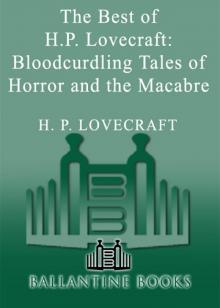 The Best of H.P. Lovecraft
The Best of H.P. Lovecraft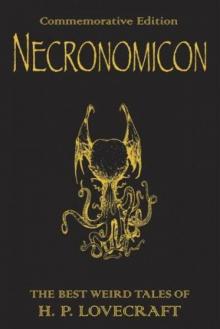 The Definitive H.P. Lovecraft: 67 Tales Of Horror In One Volume
The Definitive H.P. Lovecraft: 67 Tales Of Horror In One Volume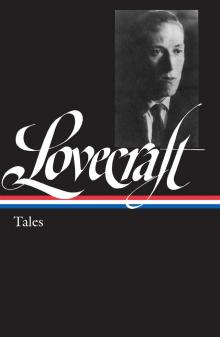 The Complete Works of H.P. Lovecraft
The Complete Works of H.P. Lovecraft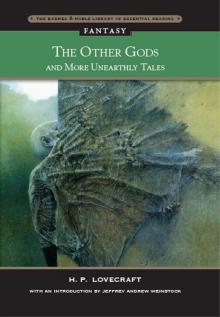 Other Gods and More Unearthly Tales
Other Gods and More Unearthly Tales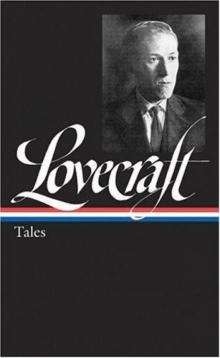 Lovecraft's Fiction Volume I, 1905-1925
Lovecraft's Fiction Volume I, 1905-1925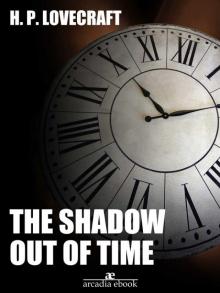 The Shadow Out of Time
The Shadow Out of Time The Shunned House
The Shunned House Lovecraft's Fiction Volume II, 1926-1928
Lovecraft's Fiction Volume II, 1926-1928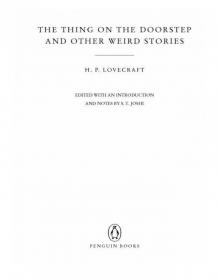 The Thing on the Doorstep and Other Weird Stories
The Thing on the Doorstep and Other Weird Stories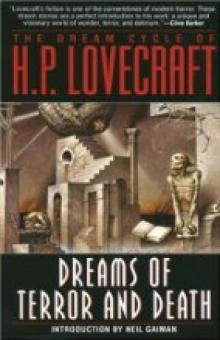 Dream Cycle of H. P. Lovecraft: Dreams of Terror and Death
Dream Cycle of H. P. Lovecraft: Dreams of Terror and Death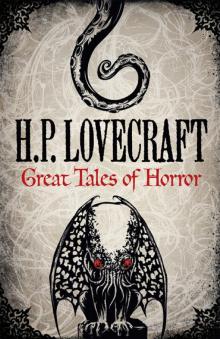 Great Tales of Horror
Great Tales of Horror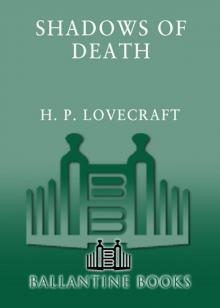 Shadows of Death
Shadows of Death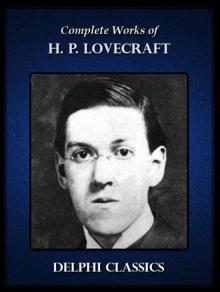 Delphi Complete Works of H. P. Lovecraft (Illustrated)
Delphi Complete Works of H. P. Lovecraft (Illustrated)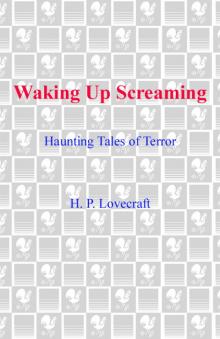 Waking Up Screaming: Haunting Tales of Terror
Waking Up Screaming: Haunting Tales of Terror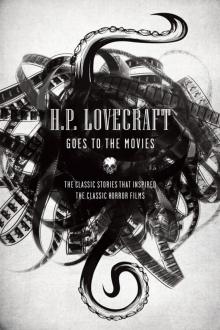 H.P. Lovecraft Goes to the Movies
H.P. Lovecraft Goes to the Movies The Road to Madness
The Road to Madness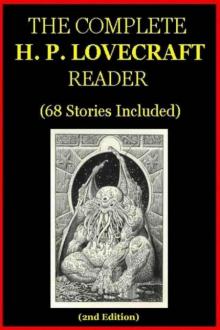 The Complete H.P. Lovecraft Reader (68 Stories)
The Complete H.P. Lovecraft Reader (68 Stories)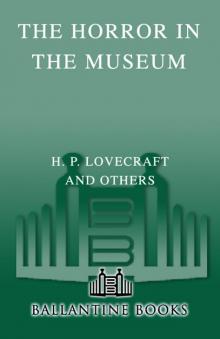 The Horror in the Museum
The Horror in the Museum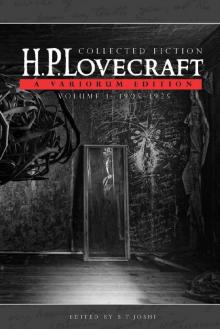 Collected Fiction Volume 1 (1905-1925): A Variorum Edition
Collected Fiction Volume 1 (1905-1925): A Variorum Edition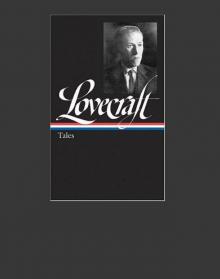 Lovecrafts_Fiction, vol.I_1905-1925
Lovecrafts_Fiction, vol.I_1905-1925 Writings in the United Amateur, 1915-1922
Writings in the United Amateur, 1915-1922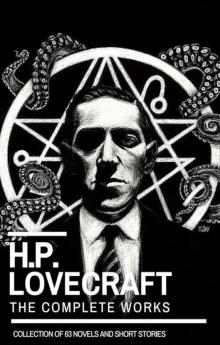 H.P. Lovecraft: The Complete Works
H.P. Lovecraft: The Complete Works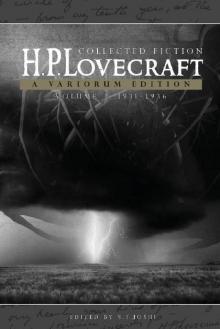 Collected Fiction Volume 3 (1931-1936): A Variorum Edition
Collected Fiction Volume 3 (1931-1936): A Variorum Edition H.P. Lovecraft: The Complete Fiction
H.P. Lovecraft: The Complete Fiction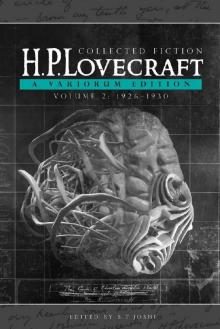 Collected Fiction Volume 2 (1926-1930): A Variorum Edition
Collected Fiction Volume 2 (1926-1930): A Variorum Edition Yog Sothothery - The Definitive H.P. Lovecraft Anthology
Yog Sothothery - The Definitive H.P. Lovecraft Anthology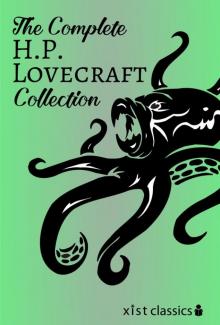 The Complete H.P. Lovecraft Collection (Xist Classics)
The Complete H.P. Lovecraft Collection (Xist Classics)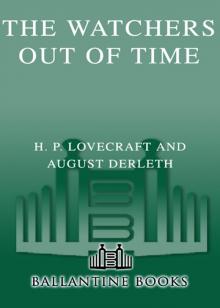 The Watchers Out of Time
The Watchers Out of Time Eldritch Tales
Eldritch Tales The Other Gods And More Unearthly Tales
The Other Gods And More Unearthly Tales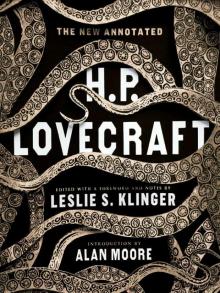 The New Annotated H. P. Lovecraft
The New Annotated H. P. Lovecraft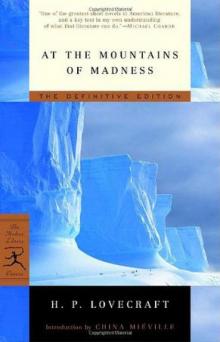 At the mountains of madness
At the mountains of madness Bloodcurdling Tales of Horror and the Macabre
Bloodcurdling Tales of Horror and the Macabre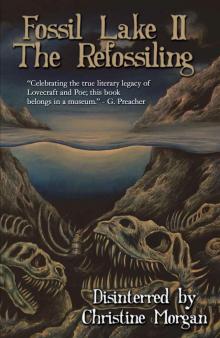 Fossil Lake II: The Refossiling
Fossil Lake II: The Refossiling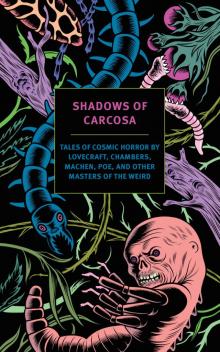 Shadows of Carcosa: Tales of Cosmic Horror by Lovecraft, Chambers, Machen, Poe, and Other Masters of the Weird
Shadows of Carcosa: Tales of Cosmic Horror by Lovecraft, Chambers, Machen, Poe, and Other Masters of the Weird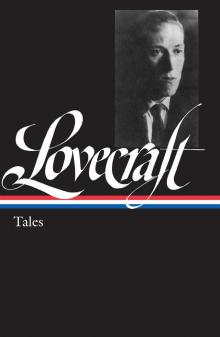 H. P. Lovecraft
H. P. Lovecraft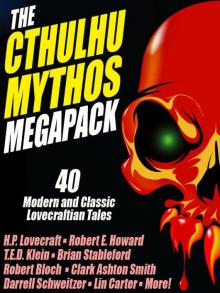 The Cthulhu Mythos Megapack
The Cthulhu Mythos Megapack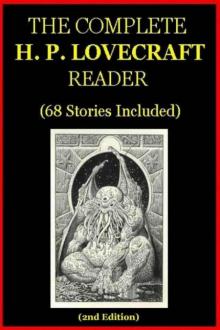 The Complete H. P. Lovecraft Reader (2nd Edition)
The Complete H. P. Lovecraft Reader (2nd Edition)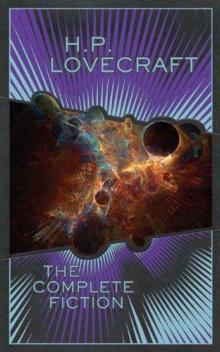 The Complete Fiction
The Complete Fiction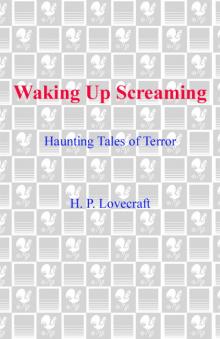 Waking Up Screaming
Waking Up Screaming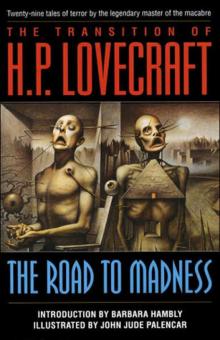 Transition of H. P. Lovecraft
Transition of H. P. Lovecraft![[1935] The Shadow Out of Time Read online](http://i1.bookreadfree.com/i2/04/12/1935_the_shadow_out_of_time_preview.jpg) [1935] The Shadow Out of Time
[1935] The Shadow Out of Time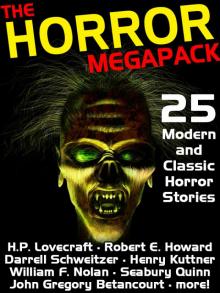 The Horror Megapack
The Horror Megapack